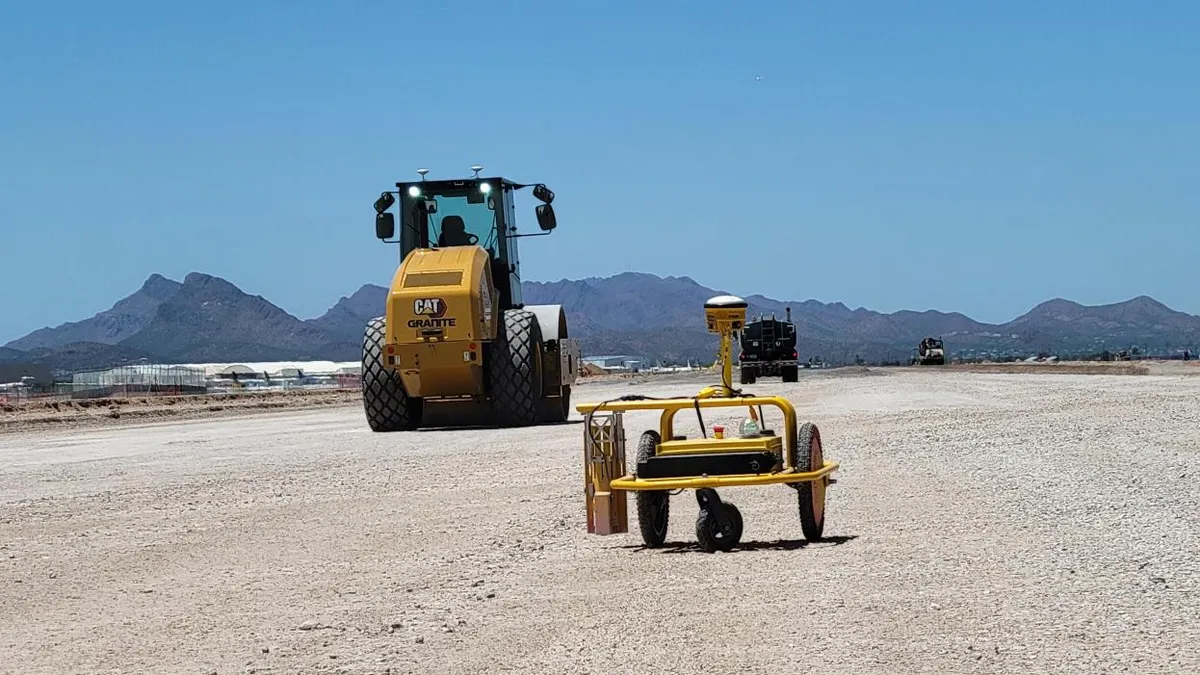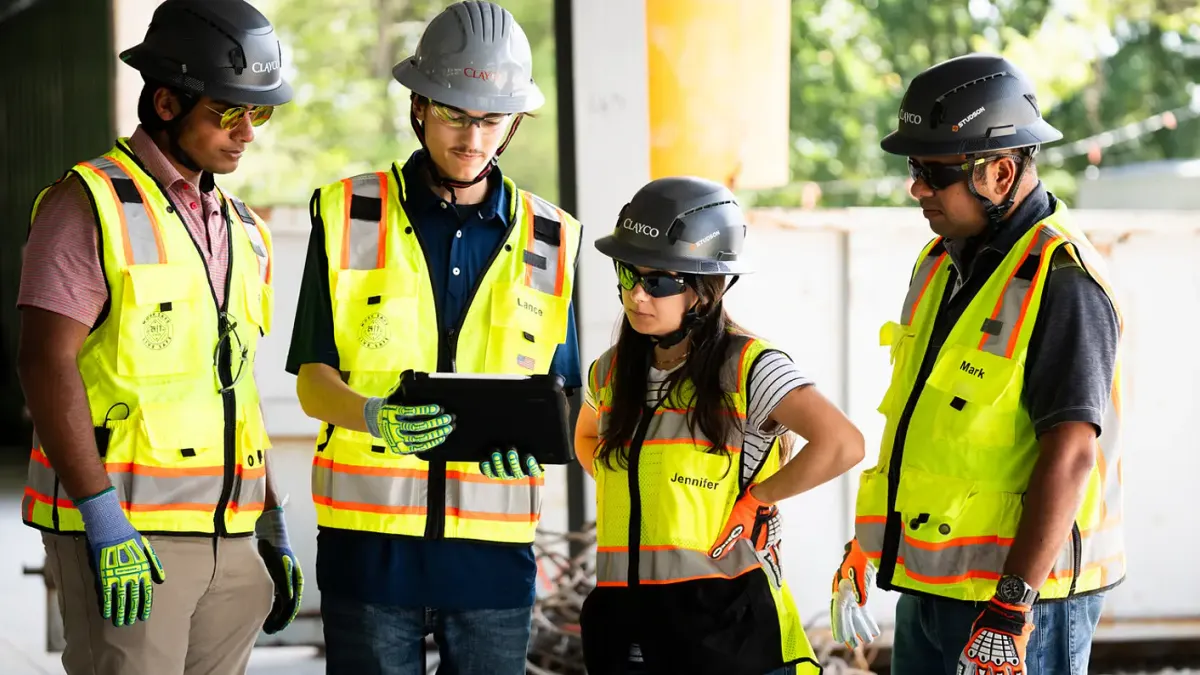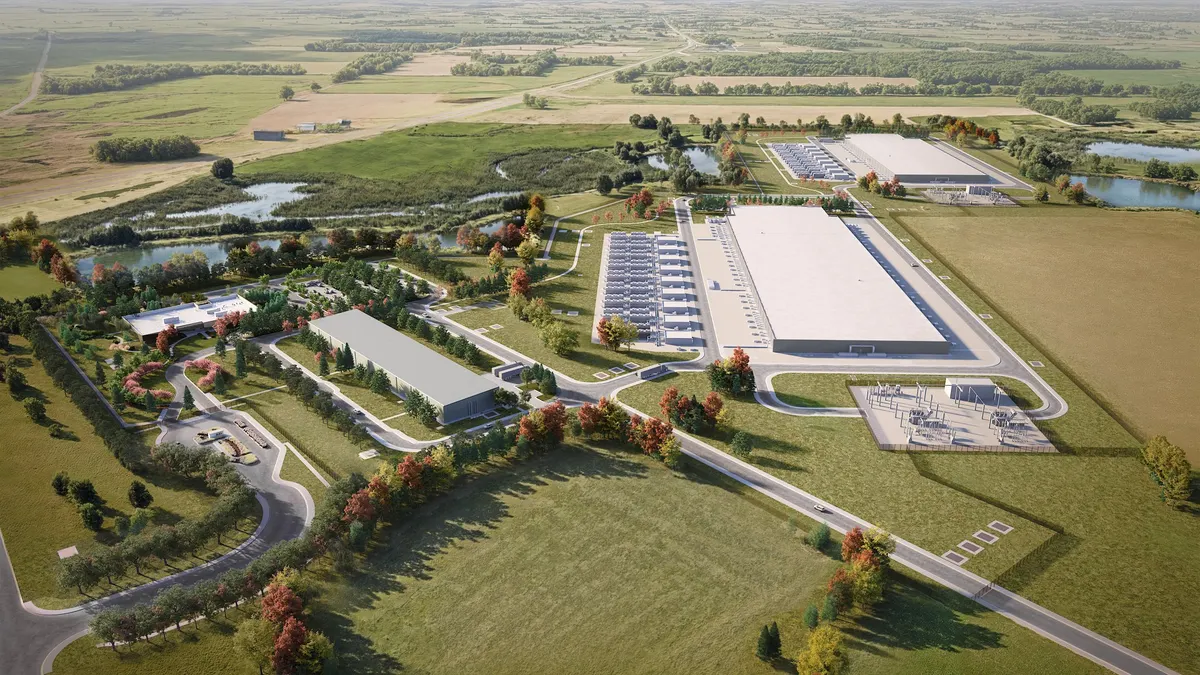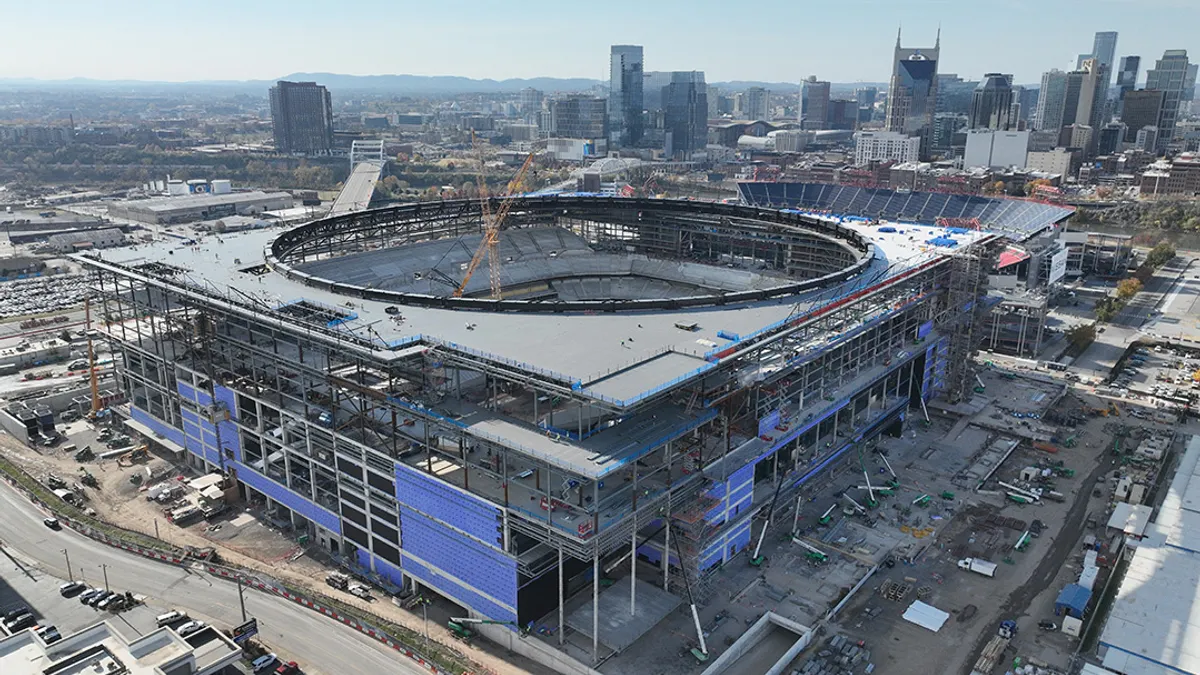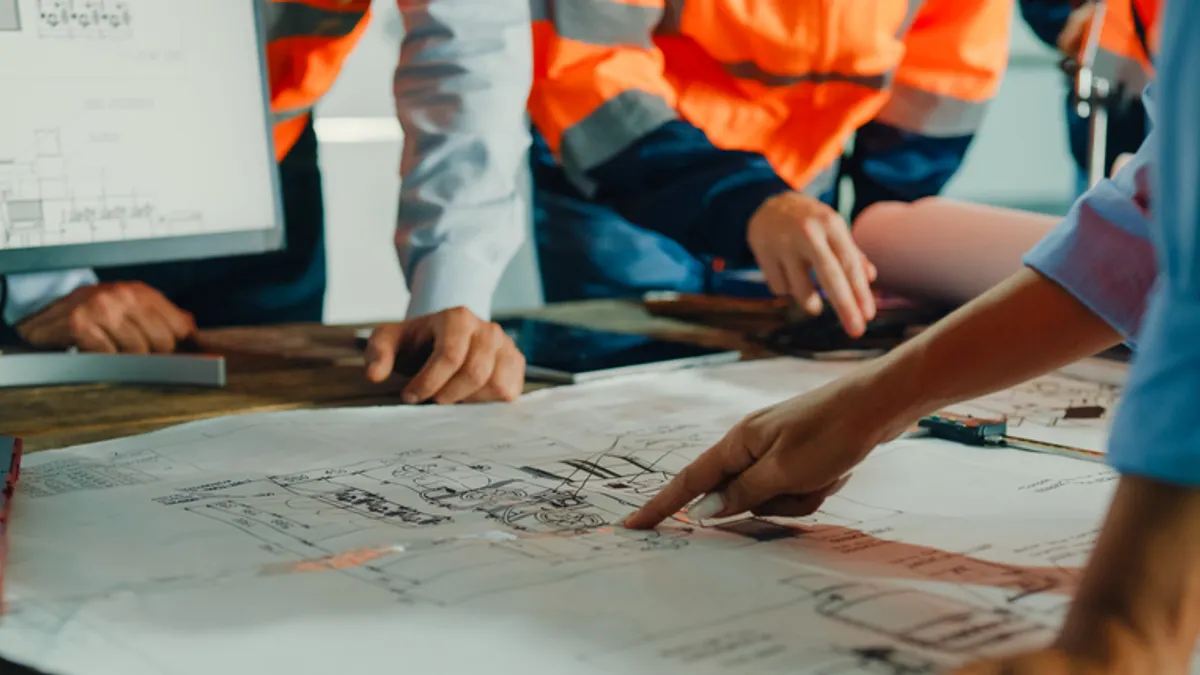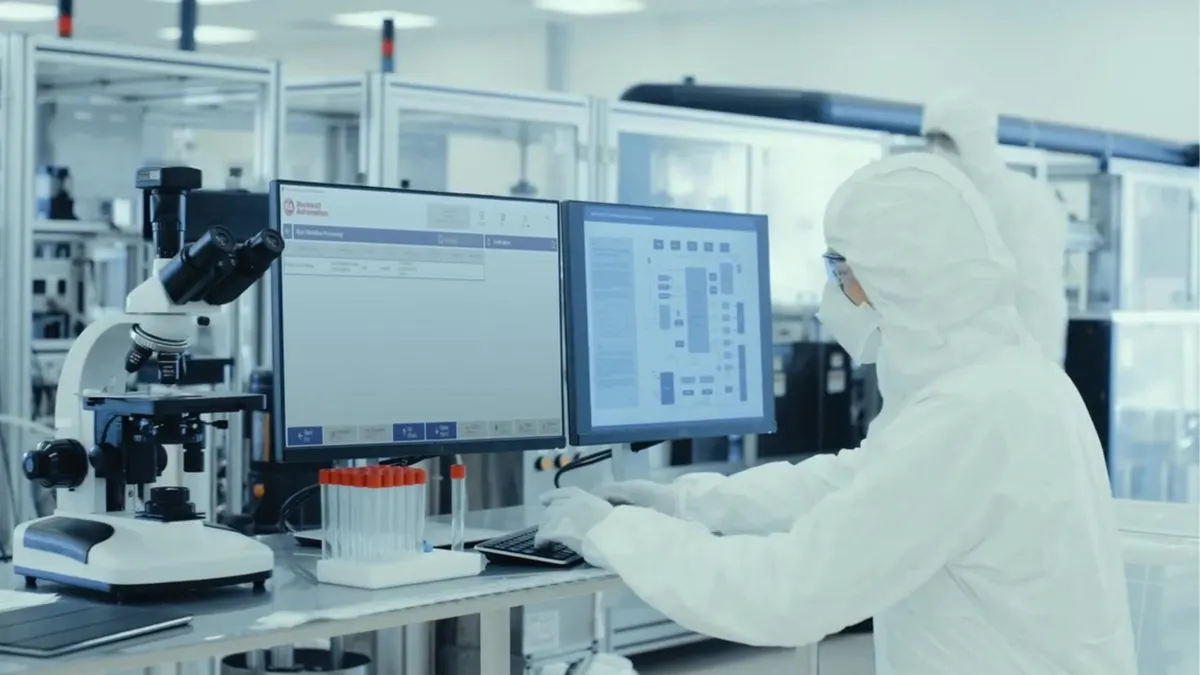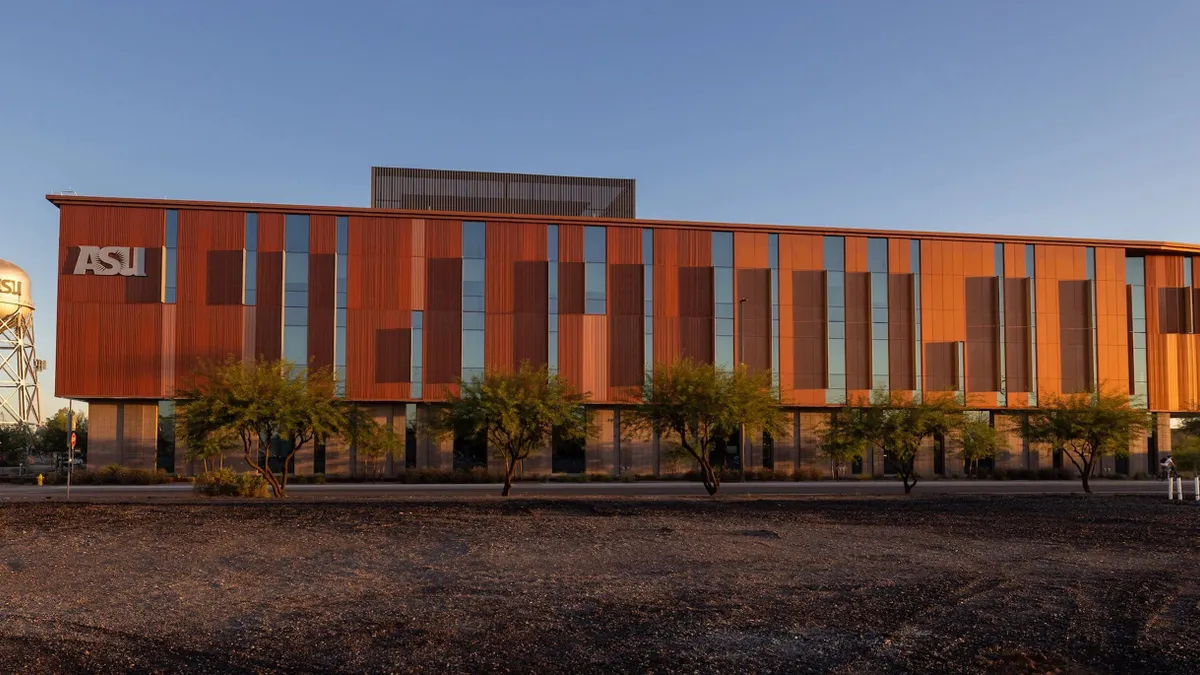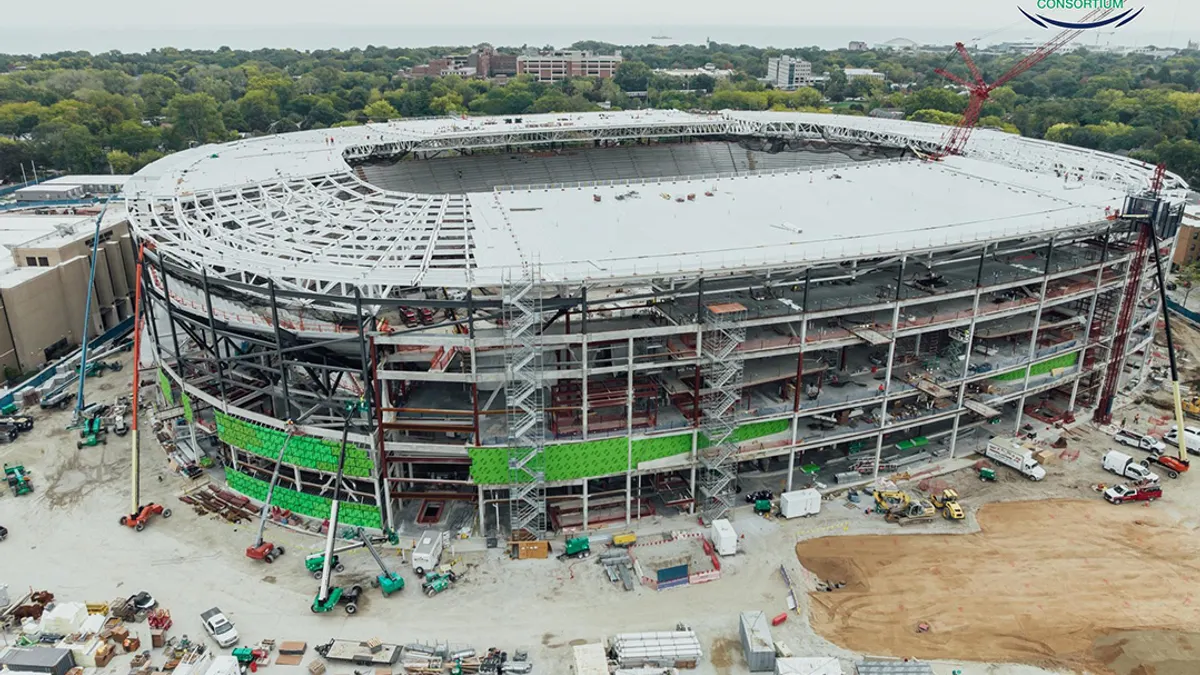Workers can have an idea of when they’ll need to retire. But autonomous machinery might push that deadline out, a Granite Construction tech lead says.
Aaron McClellan, construction technology manager for the Watsonville, California-based infrastructure builder, is familiar with the use of the technology. Granite has introduced supervised autonomous equipment, where it has retrofitted existing machines, on the Tucson International Airport in Tucson, Arizona, and on a New Mexico jobsite.
The retrofit kits on those projects came from Bluelight Machines, based in Pittsburgh, which features remote control from any mobile or desktop device and regular software and feature updates delivered over-the-air, per the company’s website.
Here, McClellan talks with Construction Dive about implementing autonomous equipment, the benefits the company has reaped, and tips on how to talk to workers about the new technology.
Editor’s Note: This interview has been edited for brevity and clarity.
CONSTRUCTION DIVE: How did you come across these autonomous kits, and what problems did they solve?
AARON MCCLELLAN: We got introduced to Bluelight Machines through a couple different channels. We ended up going up to Northern California, where we watched a demo, had a conversation with the company there, and it fit well into what we needed to improve operations in the Arizona region.
From there, we started coordinating meetings, had some onsite visits, and then decided to move forward with it. It's been operational for about four or five months.

Dirt rollers for us are a monotonous task that takes a skilled operator away from a more critical path or scheduled activity. For us, the use of a supervised autonomous dirt roller allowed us to use those operators in a more effective manner.
It upskills our labor. It allows them to do more with the equipment that we have, without having to sit inside of a roller that moves up and down a project all day long.
We have two of them right now. We've got one at a project in New Mexico, and we have one at a project in Arizona.
What have you noticed since Granite started using autonomous tech?
I think the use of supervised autonomous, or remote-controlled equipment allows for safer operation. We would definitely get efficiency out of it.
There's time savings. If you've got a skilled operator, and they need to be moving material with some kind of rock hauler, they're more critical to the operations to move the material in and around the jobsite than we are flattening out a flat piece of dirt.
It makes a lot more sense to give them the controls. They put the dirt roller in motion, and then they operate the truck. There’s a lot of efficiency we can get out of that.
If we talk more generally, it allows us to scale out our workforce. We know that there's a huge labor shortage. The way that we're looking at it is, if we can scale out to where we've got multiple machines to one operator, then we're allowing our operators to be more effective.
It also takes them out of the seat. In certain cases, we've got very high risk work that, if an employee sits in the operator seat inside the machine and something were to happen, it could be fatal. If we can remove that person from that environment, it allows it to be a safer operation.
How was the learning curve for the technology?
We expected a little bit of a ramp up period. Like, all right, we'll feel it out for a week and get operators used to it. Maybe another week of getting in and around, but once they got the feel of using the tools that they had, it was a day or two, and then they were off to the races.
I think a lot of it comes down to the partnership that you have with the companies that provide those types of solutions.
A lot of the tech has moved rapidly over the last couple of years, so it's a lot easier for operators to grasp how to control it. They build in a lot of similar tools that the operators would see in the cab itself.
A lot of the dashboard that exists in the cabs of the machines is also brought to either the tablets or the seats that they sit in. That way, it replicates what they're used to, and that helps bridge the gap between how fast it allows them to transition to a remote or a supervised role.
How do your workers feel about this technology?
I think there's a lot of work. There's a lot of openness. I think that they see that it's not just coming in to replace anybody.
As long as the messaging is about the safety and the efficiency, and you're extending the tenure of some of these operators that may be seeing retirement on the horizon. It allows them to expand that tenure to maybe even past the dates that they had kind of anticipated for themselves based on physical limitations.
There's always going to be hesitancy and change. We embrace that, and we know that we have to understand where the skepticism comes from and meet them halfway, and understand what that looks like, and how do we get around that, or work through it with you.
What does meeting your workers halfway look like?
A lot of it is understanding what they want.
If we move to an autonomous machine, for example, there are certain aspects that they like to feel right. If we can have relationships with the vendors that are providing these retrofit kits that do these awesome things through the use of technology, we also have to consider, what is the operator so used to that it's going to be hard for them to transition without it?
One of the things that we had conversations with a provider about a while back was the natural feel of the machine and how the controls work. That is something that is inherently developed over years and years of operating that machine.
Taking that feedback, and then providing that to those solution providers, helps bridge the gap on the field versus the tech being able to be used.



